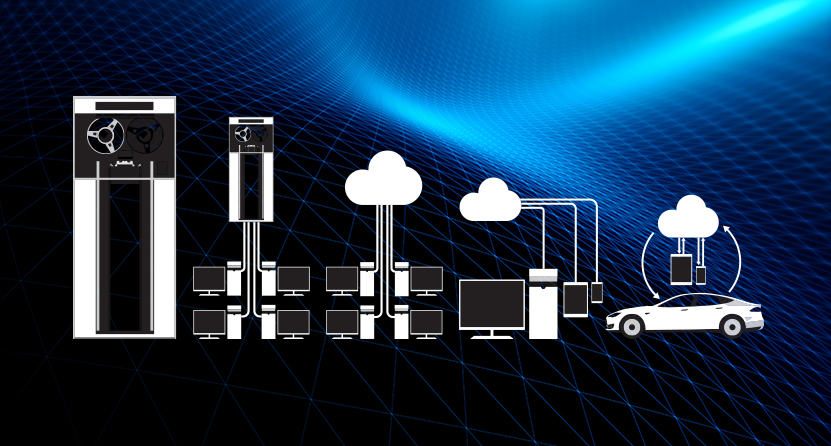8135 NE Evergreen Parkway, Suite 1220, Hillsboro, OR 97124
400 S. Akard Dallas, TX 7520
11680 Hayden Rd Manassas, VA 20109
8135 NE Evergreen Parkway, Suite 1220, Hillsboro, OR 97124
400 S. Akard Dallas, TX 7520
11680 Hayden Rd Manassas, VA 20109

End users demand seamless connectivity. New technologies are being adopted by the enterprise to streamline delivery of workloads, products, and services in the fastest, most efficient ways possible. Innovation bridges people, places, and things by incorporating everything from edge computing, to peering networks, to hybrid cloud, to hyperscale clouds, to submarine cables.
The PNW is uniquely positioned to serve as a catalyst for innovation in this era of digital transformation. The Pacific Northwest, an area often called the Silicon Forest for it’s progressive advancements in everything from music to healthcare, has earned a spot in the top 5 datacenter hubs in the US. And the opportunity to become an even larger presence in the industry has never been greater.
Today’s PNW tech professionals have been tasked with building the infrastructure and solution mix that not only meets current connectivity needs, but will also serve as the foundation for the demands of tomorrow’s end user. Considerations include everything from streaming an online VR gaming experience to automation in manufacturing to secure low-latency world commerce transactions. PNW tech professionals are bringing together connectivity, innovation, and sustainable practices to building tomorrow’s seamless network.

IoT, Cloud Computing, content delivery, data outsourcing, and submarine cables are generating growth in the regional market. The PNW is currently in the top 5 of data center hubs in the US, and growing.
 PNW Panel Tech Panel Eric Rosenberry, Iovation
PNW Panel Tech Panel Eric Rosenberry, IovationGrowth in Transpacific Cable infrastructure is hugely significant to establishing why the PNW is not a datacenter hub to be overlooked. In 2012 there was less than 100 terabits of capacity for entire West coast. Today, a new generation cable carries capacity for a minimum 50 terabits per cable. 75% of submarine cable interconnectivity currently under construction will land in Hillsboro, Oregon. This includes Google’s FASTER cable, that connects the west coast with two hubs in Japan at speeds 10 million times faster than a modem.
In addition, there are three backhaul paths in the region that support connectivity between Eugene and Bandon, Hillsboro and the the pacific coast. Interconnect fiber and cloud backhaul/transport services like Opus Interactive’s lit services that offer the lowest latency direct connect to AWS reinforce the attractiveness of the area’s connectivity infrastructure.

Google FASTER on Trans-Pacific Submarine Cable Network (Photo: TeleGeography) Additional resource: How Edge Computing, Transpacific Submarine Cables, and the New Administration are Disrupting the Data Center Industry (Opus Interactive blog post)

In 2013, data centers consumed an estimated 91 billion kilowatt-hours of electricity. By 2020, that number is expected to grow to 140 billion kilowatt-hours annually. Power usage and costs make up a significant portion of the data center leasing transaction. Not only are efficient data centers good for the environment, but sustainable power usage and efficiency practices equate to cost savings as well. Leading technology companies like Google, Facebook, LinkedIn, and Apple are mandating renewable power options world-wide and changing the way the industry and changing the data center market.
The PNW has spent decades building up infrastructure and a pool of talented professionals that can adapt quickly to meet evolving needs.
As cloud adoption increases, the solution mix evolves. All clouds are not created equal. How and where you host is more important than ever. A gaming development company in Portland that uses cloud to support development workloads has different needs than a healthcare company with multiple locations that uses cloud to store and access sensitive data. And their needs will differ widely from a Seattle-based e-commerce site whose customer base resides in the Asia-Pacific market.
In the PNW, infrastructure supports delivery of the sophisticated multi-cloud mix of hyperscale, public, hybrid, private (on and off prem), peering, and edge computing that are being incorporated to distribute workloads in ways that maximize efficiencies and improve latency speeds.

Look for more innovation in platforms that streamline the cloud. End user needs for storage, bandwidth, and compute continue to grow. And, for enterprise IT, finding the right solution can be complex. From making the determination to migrate to which multi-cloud best meets the needs of the organization and its end users to maintenance, communication, and mapping resources.

The demand for bandwidth intensive content and connected devices continues to rise. Research firm, Strategy Analytics, predicts IoT cellular connections to grow to more than 2.4 billion in 2025. Edge computing moves data acquisition, control functions, storage, and applications closer to the end-user to more efficiently deliver content.
Thanks for reading. Feel free to send us an email if you have any questions or if you’re interested in learning more.